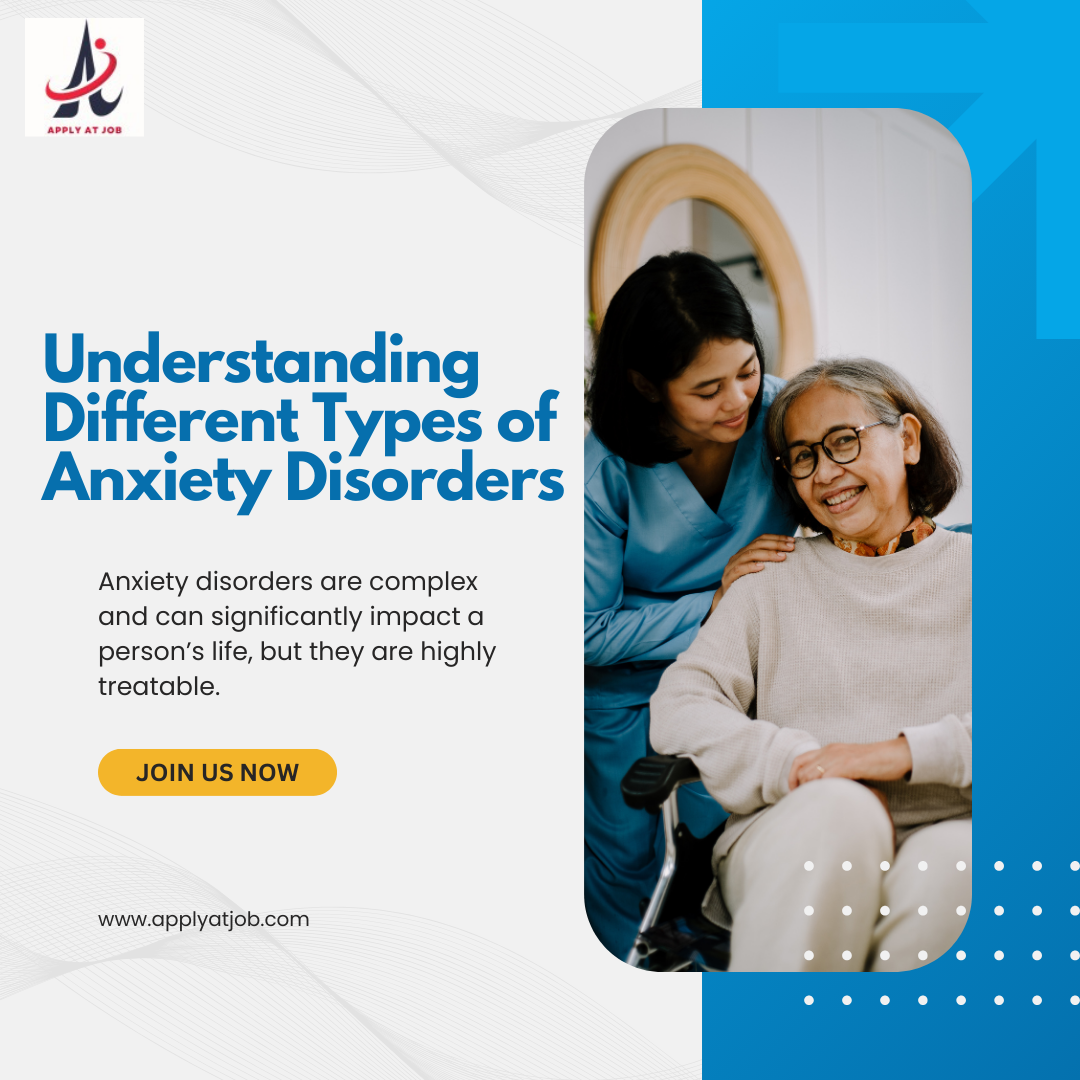
Recognizing the Various Types of Anxiety Disorders
Anxiety is a normal reaction to stress and, in some circumstances, an aid in maintaining attention and alertness. But for some, anxiety can become crippling and enduring, making it difficult to go about their everyday lives. Anxiety disorders may be indicated when symptoms become severe or persistent. One of the most prevalent mental health issues, anxiety disorders impact millions of individuals globally. These illnesses can present in a variety of ways, each with specific symptoms and causes. We'll look at the many kinds of anxiety disorders in this blog, along with its signs, causes, and current therapies.
1. What Disorders of Anxiety Are?
A class of mental health diseases known as anxiety disorders is defined by severe, persistent, and overwhelming concern or terror over commonplace events. In contrast to typical anxiety, which is often transient and associated with certain stresses, anxiety disorders can result in excessive, ongoing concern that interferes with an individual's capacity to go about their everyday lives.
Among the primary categories of anxiety disorders are:
. Anxiety Disorder in General (GAD)
. Anxiety Disorder
. Phobias Particular to Social Anxiety Disorders
. OCD, or obsessive-compulsive disorder
. PTSD, or post-traumatic stress disorder
. Disorder of Separation Anxiety
2. Disorder of Generalized Anxiety (GAD)
a) What Exactly Is GAD?
The hallmark of generalized anxiety disorder is excessive and persistent concern over routine tasks or occasions. Anxiety is a common emotion for those with GAD, and it is not situation-specific. The concern can be hard to manage and is frequently out of proportion to the real circumstances.
b) Generalized anxiety disorder symptoms:
Excessive and ongoing concern over a range of life issues (e.g., employment, health, relationships)
. Unease or a "tense" feeling
. inability to focus or mental blankness
. Intolerance
. Tension in the muscles
Disorders related to sleep, such as trouble falling or staying asleep
c) Causes of GAD:
Although the precise etiology of GAD is unknown, a number of variables, such as genetics, brain chemistry, and environmental stressors, may play a role in its development. Anxiety problems run in families, hence developing GAD is more common in certain situations.
3. Anxiety
1) What Is Disorder of Panic?
Panic Disorder is characterized by frequent and unexpected panic attacks, which are sudden periods of acute dread or discomfort. Physical symptoms including dizziness, shortness of breath, and a racing heart are frequently experienced in conjunction with these episodes. People who suffer from panic disorder frequently avoid particular settings out of fear of experiencing another episode.
b) Panic Disorder Symptoms:
. Frequent and unexpected panic episodes
. sentiments of imminent peril or disaster
. Breathlessness, chest discomfort, or an accelerated pulse
. Trembling, trembling, or sweating
. Fear of "going crazy" or losing control
Staying away from locations or circumstances where panic episodes have happened
c) Causes of Panic Disorder: Genetic, biochemical, and environmental factors can all contribute to the development of panic disorder. The likelihood of getting panic disorder may be raised by traumatic events, severe stress, or a family history of the illness.
4. Social Anxiety Disorder: What Is It?
The hallmark of social anxiety disorder, also known as social phobia, is a severe dread of public spaces or performance settings. Individuals suffering with this illness dread judgment, embarrassment, or humiliation in public. Daily tasks including going to social events, giving public speeches, or even dining in front of people might be hampered by this phobia.
b) Social anxiety disorder symptoms:
. severe anxiety about interacting with others or being observed by them
. avoiding social gatherings and speaking in public
. Fear of being humiliated or embarrassed
. Physical signs in social situations, such as flushing, perspiring, shaking, or nausea
. Difficulty making eye contact or speaking in groups
c) Causes of Social Anxiety Disorder: Personality qualities, early experiences, and genetics may all have an impact on social anxiety disorder. Individuals who are introverted or timid by nature may be more vulnerable to social anxiety.
5. Particular Phobias a) Describe Particular Phobias?
An extreme and illogical dread of a certain thing, circumstance, or action is known as a specific phobia. Common phobias include claustrophobia, acrophobia, aviophobia, and arachnophobia, which is the fear of enclosed places or spiders. Severe anxiety or a panic attack may be brought on by being in the dreaded item or circumstance.
a) Particular Phobia Symptoms: Prompt, severe fear or anxiety in reaction to the thing or circumstance that causes the phobia
. avoiding the thing or circumstance that causes dread
. When faced with the fear, physical symptoms like sweating, shaking, or a beating heart may occur.
. The level of worry is out of proportion to the real threat.
Causes of Specific Phobias: Traumatic events, such as an unpleasant experience with the thing or circumstance that causes the phobia, can give rise to specific phobias. They might also be picked up through cultural influences or observation. Brain chemistry and genetic predisposition may also be important.
Conclusion:
Although complicated and capable of having a major influence on a person's life, anxiety disorders are also quite curable. The first step in getting therapy is realizing the many kinds of anxiety disorders and their symptoms. Adequate treatment, medication, and lifestyle modifications can enable people with anxiety disorders to have happy, healthy lives. If you or someone you know is experiencing anxiety, you might want to get treatment from a mental health professional.
You can visit our site: Applyatjob.com
https://applyatjob.com/hiring-employee
https://applyatjob.com/jobs




